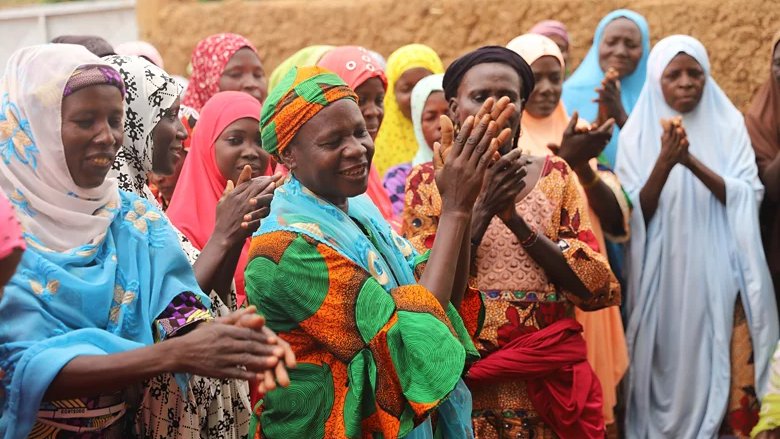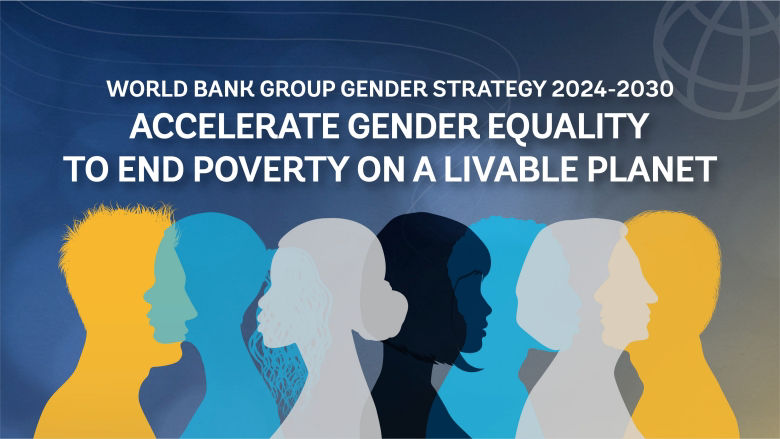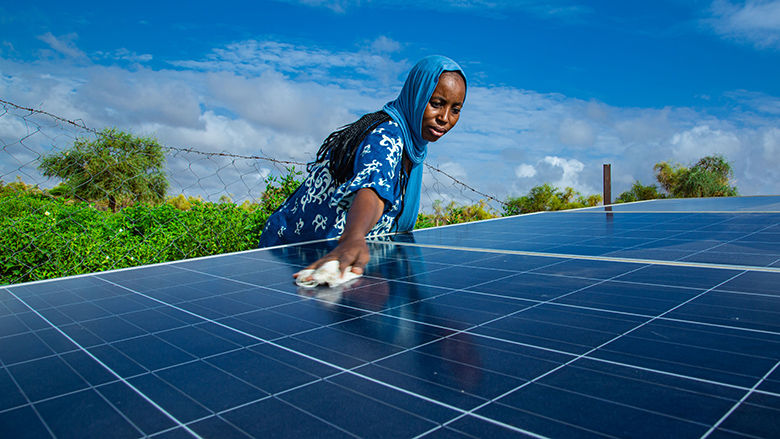Access to social protection is critical for ending extreme poverty and boosting prosperity on a livable planet. ľ��ӰԺ is committed to scaling up social protection programs, working with governments and partners, to support at least 500 million poor and vulnerable people by 2030, with a focus on women and children.
Social protection is a lifeline for poor people. It helps protect people against shocks today and build resilience and human capital to make the most of tomorrow. Well-designed social protection programs have a high return on investment. For every dollar transferred to poor families, there is an estimated multiplier effect of $2.49 in the local economy. The evidence also suggests impacts on a range of outcomes��from nutrition and early childhood development to climate adaptation and mitigation to women��s empowerment and livelihood diversification.
Yet, despite an unprecedented scale-up of social protection systems during the COVID-19 pandemic, nearly 2 billion people in low- and middle-income countries still lack adequate coverage. At the same time, we are facing significant labor market challenges, including a projected need for 320 million additional workers in high-income countries and a 300 million job gap for young people, primarily in Africa and South Asia.
Scaling up social protection programs to achieve the target of supporting at least 500 million people demands more and better spending. Low-income countries, particularly in Africa and South Asia where coverage gaps are highest, will continue to need additional external support. Efficiency gains are possible through resource reallocation, away from regressive subsidies; through diversification of financing, including innovative financing mechanisms; and through digital delivery systems. It also demands redoubled attention on the knowledge agenda to and , as well as to pursue partnerships that leverage collective action toward universal social protection.
As of September 2024, we are providing close to $29.5 billion in financing through our social protection and jobs programs across regions and income levels, including $17.6 billion through IDA, our fund for the poorest. |
EQUITY
Building social protection systems that are well-designed can have powerful impacts over the long term, by reducing inequalities and exclusion, creating opportunities, and ending the inter-generational cycle of poverty - including for women, youth, and persons with disabilities.
Social protection instruments like social insurance, social assistance, and labor and economic inclusion programs help people, especially women, find better jobs. They also allow individuals to improve productivity, and families to invest in the health and education of their children, provide food security, and protect the aging population.
The rapidly changing nature of work in countries at all income levels requires a new approach to social protection and labor policy that works for everyone, according to the report ����. It proposes an approach to worker protection and social security that is better adapted to an increasingly diverse and fluid world of work. These ideas are explored even more fully in the 2022 strategy update, ����
OPPORTUNITY
The working-age share of the global population has peaked and the world is now aging. In just three decades, it is estimated that one in four European, North American, and Asian residents will be over 65 years of age. Over the same period, more than a third of the world��s young people aged 15 to 24 will live in Africa. ľ��ӰԺ��s are a new way to address the human, economic, and social dimensions of this global demographic transition.
that often combine cash transfers with training and savings groups help people develop valuable skills and start their businesses. They help individuals save money, invest in their businesses, and become economically self-reliant. They are also particularly impactful for women �C expanding opportunities for participation within the labor force and increasing knowledge and financial literacy.
The world��s working-age population will increase by about 700 million between 2019 and 2035. Preparing for the jobs of tomorrow while making critical human capital investments today is a priority for achieving economic transformation in the poorest countries. Aging populations worldwide will also benefit from attention to income support as they retire, opportunities to work later in life, and access to long-term care.
Simultaneously, the current polycrisis is increasing migration pressures. ľ��ӰԺ sees migration as one of the solutions to address this demographic imbalance while improving the lives of millions of migrants, including those who are forcibly displaced. are schemes in which the country of destination supports the training of potential migrants to get qualifications demanded at the destination in sectors such as mechanics, construction, health care, renewable energy, and other green industries.
RESILIENCE
Many countries have embraced social protection instruments such as to support human capital and empower people.?Apart from providing struggling families with supplemental income, these social safety nets also increase access to information and services, improve productivity, protect the elderly, and support people, especially young people, while they look for work.
Taken together, strong social protection systems help individuals and families, especially the poor and vulnerable, prepare for and cope with crises and shocks. Such systems and tools are transformative as they give people a chance to avoid or escape poverty. Well-designed social protection programs are also cost-effective, costing countries about 1.5% of GDP on average.
The future of social protection is adaptive and digital. Adaptive Social Protection invests in households�� ability to prepare for, cope with, and adapt to shocks without becoming trapped in poverty. Often integrating disaster risk, crisis response, and , such systems can increase the resilience of households against climate shocks, health emergencies, food insecurity, and inflation by adapting to the situation.
provided the ultimate stress test for Adaptive Social Protection, as countries with functioning systems were better able to rapidly expand support��by both including additional beneficiaries and by increasing the benefits paid to existing recipients. Countries with more established ways of delivering social assistance to people��such as digital social registries and payment systems��showed the strongest ability to respond to shocks efficiently, quickly, and inclusively.
UNIVERSAL SOCIAL PROTECTION
ľ��ӰԺ has a vision for universal social protection to ensure that all people have the support they need and that no individuals or groups are left behind. It is the cornerstone of inclusive social policy.
Achieving universal social protection requires adaptive systems that can expand registration, enrollment, and program participation. It also requires bridging the digital divide so that poor and vulnerable people and those without regular access to technology are not excluded.
While achievements have been made in designing and promoting the adoption of social assistance programs and delivery systems, investing heavily in initiatives to improve jobs and earnings opportunities and expanding social insurance programs are equally important.
Last Updated: Oct 08, 2024












